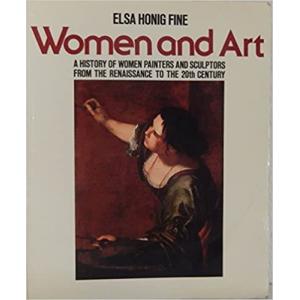Mary Rogers Williams
Our special thanks to the National Arts Club for their "@ Home events."
The National Arts Club is the owner of this material, including the creation and presention of this event.

Mary Rogers Williams was born and raised in Hartford, Connecticut, the fifth of six children of Edward Williams (1822–1871), a prosperous baker, and Mary Ann French Williams (1824-1861). Mary and her surviving sisters Lucy, Abby and Laura were all star students at Hartford Public High School, and none ever married. Mary Rogers Williams's early mentor was James Wells Champney, and she studied at the Art Students League with William Merritt Chase and at Hartford's Decorative Art Society before taking the Smith post. (A Hartford neighbor and family friend, Lindley Williams Hubbell, became a renowned poet.) Her classes at Smith included drawing, painting, sculpture, art history, "study of design with practical work" and "artistic anatomy", and she wrote a catalog of the college's plaster cast sculpture collection. She occasionally visited New York, stopping by the studio of her friend Albert Pinkham Ryder.
Almost every summer, she traveled in Europe, attracting crowds in villages when she sketched the scenery and locals. She sometimes walked between towns, partly because she could not afford car or carriage fees, and would set off to "catch a sketch" or "find a sketch," as she wrote to her sisters. Although she was Episcopalian, she attended Catholic church services in Europe (sometimes numerous times in a row on Sundays) and wrote lavish descriptions of the costumes and music to her sisters. She had a Hartford-made bicycle shipped overseas for traveling in the countryside. She lived in Paris in 1898–99 (she studied then at the Ecole des Beaux-Arts and with James Abbott McNeill Whistler) and 1906–07, in flats on rue Boissonade, with numerous other painters nearby.
A member of the New York Woman’s Art Club, she exhibited there (1899, 1902, 1903) and at venues including the American Water Color Society (1892), Art Association of Indianapolis (1895), Pennsylvania Academy of the Fine Arts (1895, 1896, 1902–04), Gill's Art Galleries, Springfield, Massachusetts (1898), American Girl's Club in Paris (1898, 1907), National Academy of Design (1903–04), New York Water Color Club (1892–96, 1899-1902), Society of American Artists (1896), Macbeth Gallery (1902, 1903—she also commissioned "aquarium"-like frames from Macbeth, with a glass layer an inch away from the delicate pastel surface) and Paris Salon (1899). Commemorative posthumous shows were held in 1908 and 1909 at the Philadelphia Water Color Club (at Pennsylvania Academy), New York Water Color Club and Wadsworth Atheneum and Hartford Art Society in Hartford. Publications that praised her include the New York Times, the Hartford Courant, the Springfield Republican and various art magazines. In 1894, in an article in the Quarterly Illustrator (vol. 2, no. 6, p. 111-124), the novelist Elizabeth Williams Champneydescribed Mary Williams as "an artist with rare poetic instinct and feeling" and "a woman of conscience as well as feeling, and of a fine scorn for all shams." The Champney article added, "When asked what style she proposed to adopt, she replied: 'If I cannot have a style of my own, I trust I may be spared an adopted one.'"








